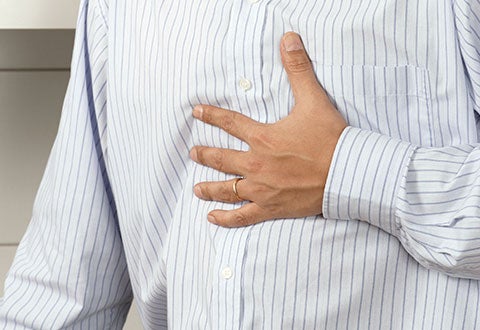National Heart Centre Singapore will NEVER ask you to transfer money over a call. If in doubt, call the 24/7 ScamShield helpline at 1799, or visit the ScamShield website at www.scamshield.gov.sg.

If you are experiencing a sensation of discomfort, tightness or pressure in your chest, take heed.

HEART ATTACK VS CARDIAC ARREST
Heart Attack | Cardiac Arrest |
| Symptoms
A heart attack can trigger life-threatening arrhythmia, leading to sudden cardiac arrest. The symptoms of a heart attack are typically more pronounced. They include:
| Symptoms
Sudden cardiac arrest often occurs without warning symptoms. A person with sudden cardiac arrest might lose consciousness, collapse suddenly and become pulseless. Dr Lee Phong Teck, Associate Consultant, Department of Cardiology, says that occasionally, shortlived warning symptoms might occur, which include:
|
| Who's at risk?
Certain risk factors increase the probability of developing a heart attack. These include:
|
Who's at risk?
|
| What to do As a heart attack is serious and can be fatal, Dr Lee advises that immediate medical attention should be sought when one experiences any sort of chest pain or discomfort which is not relieved by rest or medication. | What to do Dr Lee adds, “A sudden cardiac arrest is a medical emergency. In the first instance of sudden cardiac arrest, call 995 for an ambulance immediately. Perform CPR and deliver treatment with an AED while waiting for medical help to arrive. By doing so, it increases the person’s chances of survival.” |
This article is from Murmurs Issue 33 (Jan – Apr 2019). Click
here to read the full issue.
Keep Healthy With
© 2025 SingHealth Group. All Rights Reserved.
















